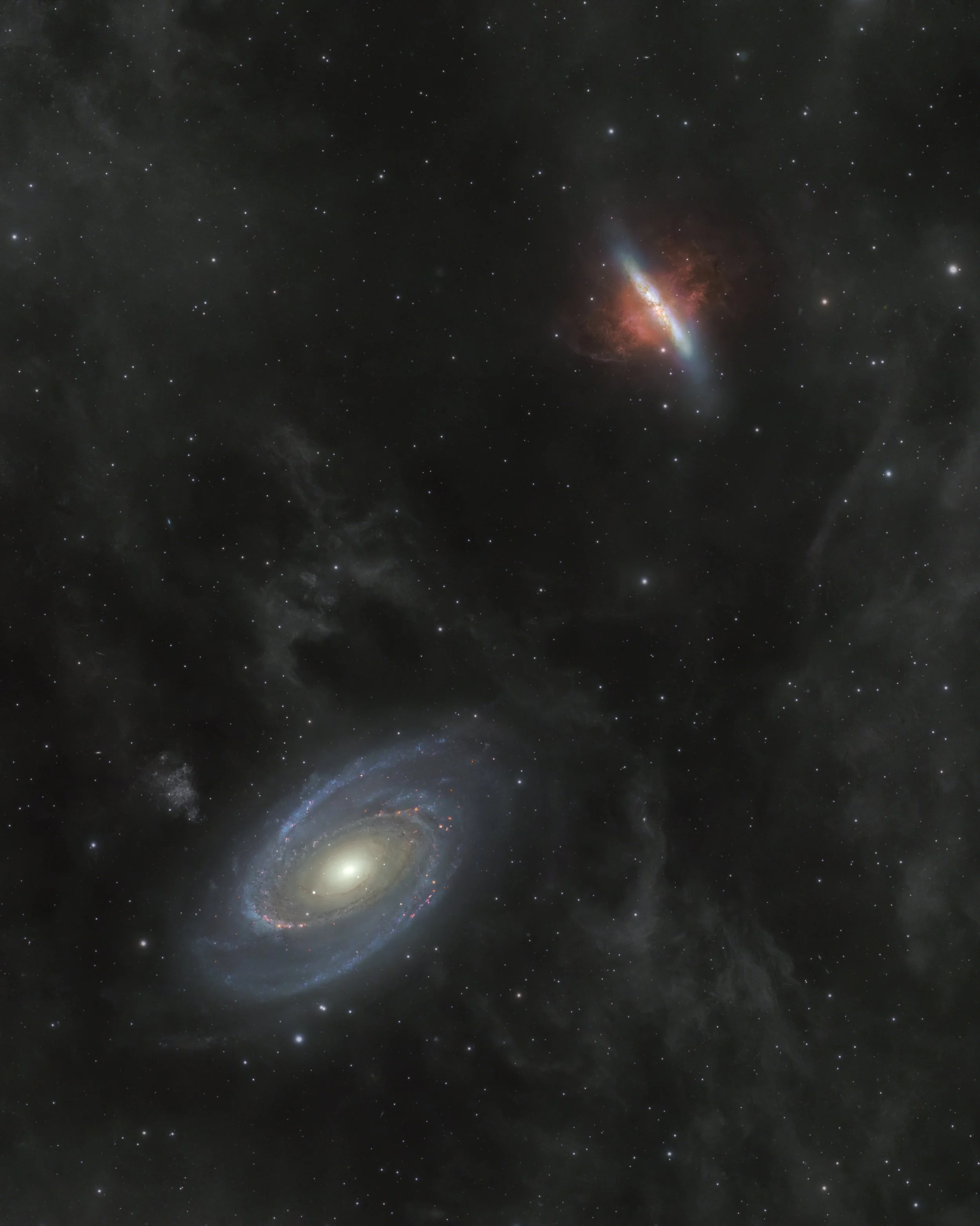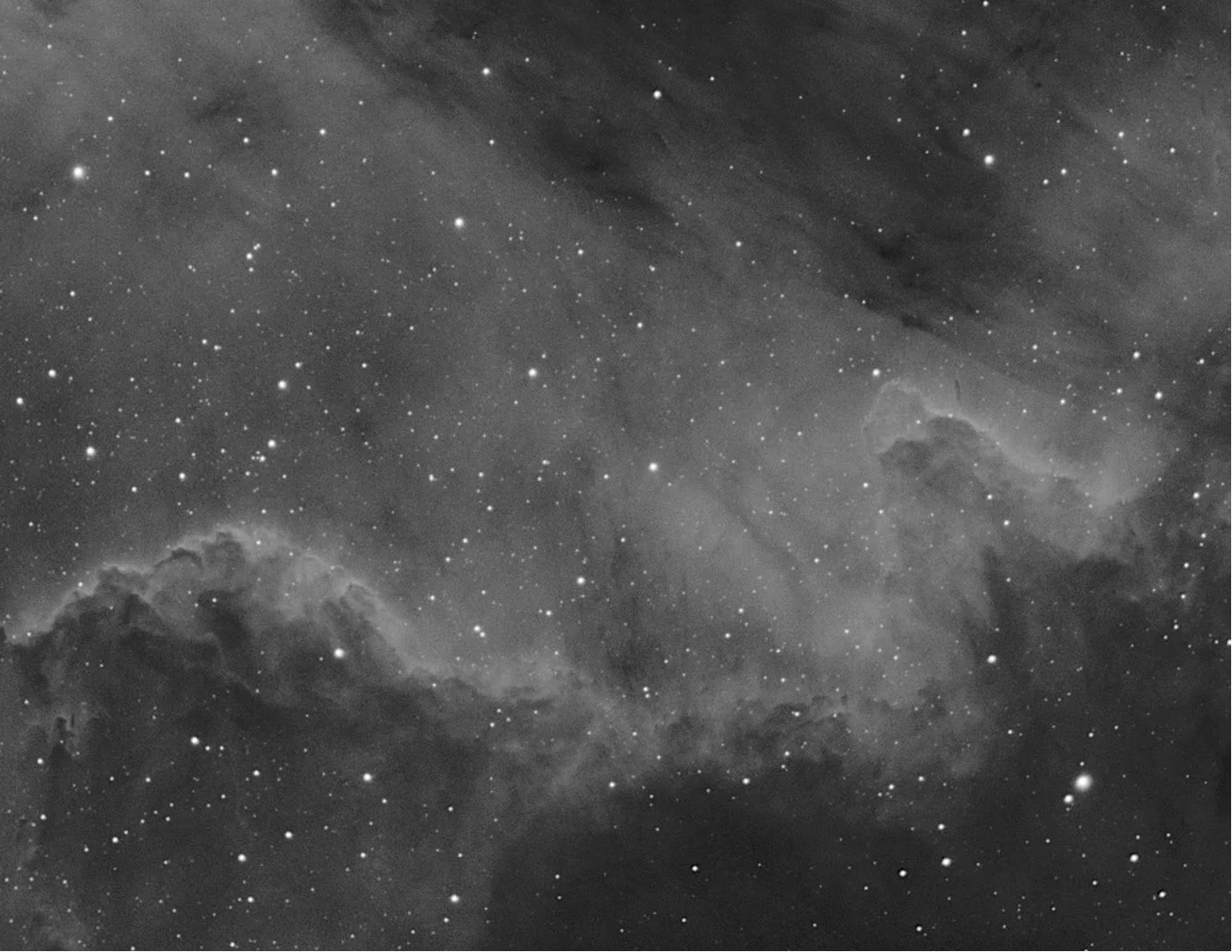
Processing
Photographs are composed of three colours - red, green and blue. As you can see they create a range of colour when combined.
To create the iconic Pillars of Creation picture, the Hubble Space Telescope took individual images of three gases in the nebula - hydrogen (Ha), oxygen (OIII) and sulphur (SII). These were coloured green, blue and red respectively and combined to compose the final spectacular colour image.
Back here on earth, we can steal this ‘Hubble Palette’ technique and create our own images. We use ‘narrowband’ filters that only allow the narrow bandwidths of light from the different gases to pass through and hit the camera’s sensor...
When we take images of galaxies, we are seeing mostly wider broadband rather than narrowband light. So these require different filters, but we do still need to combine red, green and blue light. To take the image of Bode’s galaxies, my filters were red, green, blue, luminance and hydrogen alpha. The panels from each of these were coloured accordingly and combined to give the final colour picture.
I use stacking for all my deep sky images. In fact it’s widely adopted for nearly all the best astrophotos you’ll see and works almost like magic.
You take multiple images of your target with identical framing and settings and combine them with stacking software. This layers them on top of each other making the signal becomes stronger. Anything consistent in each sub-frame gets enhanced (your target) and anything inconsistent gets thrown out (the grain). In other words, the noise disappears because it varies from frame to frame. Let’s look at a noisy single frame and compare it with what happens when 45 exposures (sub frames) are stacked together.
Even though the stacked image is cropped in here, you can see virtually no noise. The billowing gas and dust has a much clearer resolution. Stacking is the alchemy of astrophotography!
The Hubble telescope takes images from space, whereas back on Earth we have to contend with clouds, light pollution and inconsistencies in the atmosphere directly above us. These are combined with noise from within the camera, such as read noise caused by the camera’s electronics; thermal noise from heat creating a dark current and hot pixels; and fixed pattern noise. This all causes a graininess that looks horrible. But there is a solution… stacking.
Single 300s sub-frame
Stacked 45 x 300s sub-frames
For all my deep sky images I use flats, darks and bias calibration frames. The flats are especially important, eliminating variations such as inconsistencies in the filters, dust motes and vignetting. I use a light box to make these in the UK and in Texas I take sky flats.












